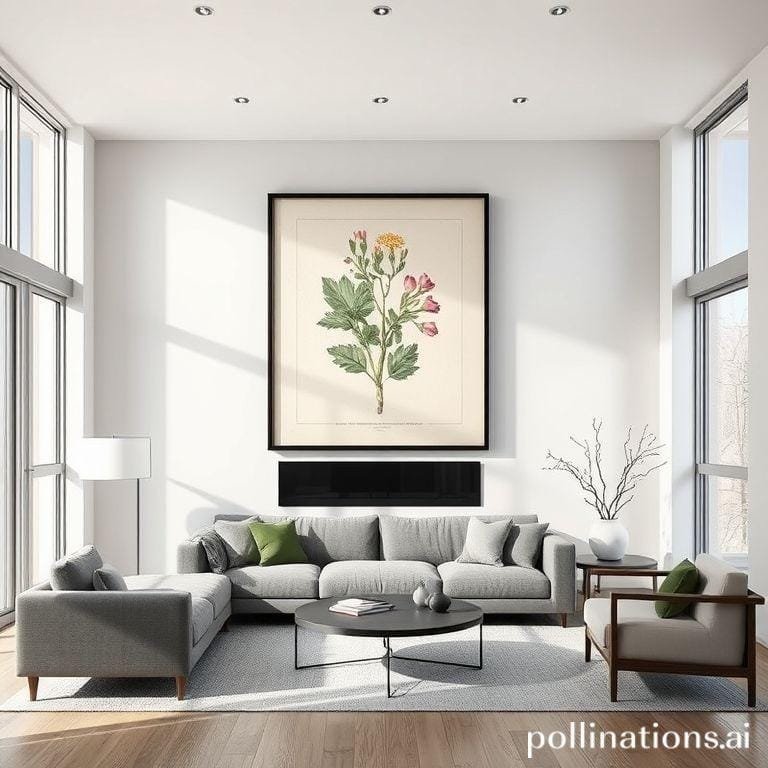Your cart is currently empty!
Blending Vintage Wall Art in Modern Homes

When you mix old-fashioned wall art with today’s home designs, something special happens. It’s like blending your grandmother’s favorite recipe with modern cooking techniques—the result is both familiar and fresh. The difference between old and new creates an exciting energy that can turn a plain room into something amazing.
As many people choose simple, clean-looking homes, they’re finding that adding vintage artwork brings personality and history that new art can’t match. It’s like adding a wise old friend to a group of young people—the conversation becomes richer.
Making Old and New Work Together
Putting vintage wall art in modern rooms creates a sophisticated look that tells a story. Think of it like a photo album in a digital world—it adds warmth and texture to spaces that might otherwise feel cold. A painting from the 1950s can bring life to a simple living room, much like a campfire brings warmth to a modern campsite.
Design experts say the secret to mixing old and new is understanding they have more in common than you might think. Both usually focus on clean designs and creating feelings. The main differences are in the materials and when they were made. When you understand these connections, you can create spaces that feel both classic and current.
Choosing the Right Vintage Art
Picking vintage wall art for modern homes requires careful looking. Find pieces that share ideas with today’s art—good layout, interesting colors, and engaging subjects. Art from the mid-1900s often works well because it’s like a bridge between old charm and modern taste.
Consider the size of your vintage finds. A large old map can be the main attraction in a modern living room, like a grandparent telling stories to captivated grandchildren. Smaller old prints can be grouped together to create a wall display with depth and character. Notice the condition—some aging adds personality, but serious damage might take away from the art’s beauty.
Using Frames to Create Balance
Frames are powerful tools for making vintage art fit in modern spaces. Today’s frames can quickly update old pieces, creating a connection between past and present. Think of modern metal frames for traditional paintings or simple floating frames for antique prints. The contrast between aged artwork and new framing creates visual interest while keeping everything working together.
The right frame doesn’t just protect artwork—it creates a conversation between the piece and its surroundings. For vintage art in modern homes, we often recommend simple, clean frames that let the artwork shine while providing a contemporary context.
Smart Placement and Grouping
Where and how you put vintage artwork greatly affects how it fits with modern decoration. Create thoughtful contrasts by hanging a delicate old watercolor above a sleek modern table, or placing a bold retro poster next to contemporary furniture. The side-by-side comparison shows the special qualities of both styles.
Gallery walls are great opportunities for mixing time periods. Combine vintage pieces with modern art, photographs, and even objects with depth. Keep visual harmony through even spacing, similar frame styles, or matching colors. This approach lets each piece keep its individual personality while contributing to a peaceful whole.
Working with Colors
Color is another strong tool for blending vintage wall art. You might pick one or two colors from a vintage piece to use in your room’s accent colors, creating a gentle link between old and new. Or, you could choose dramatic contrast by letting bright vintage artwork stand out against plain modern backgrounds.
Think about the emotional effect of color combinations. Warm vintage colors can soften cool modern grays, while the soft colors of some antique art can provide calm balance to bright contemporary spaces. The goal is to create color relationships that feel planned rather than accidental.
Lighting Vintage Art in Modern Spaces
Good lighting can change how vintage artwork works with modern interiors. Today’s track lighting or simple picture lights can highlight vintage pieces while keeping a modern look. Consider the artwork’s surface—glare on glass-covered pieces might need careful angle changes, while textured oil paintings benefit from side lighting that shows brushstrokes.
Modern LED technology offers new ways to show vintage art. Adjustable lights can enhance warm vintage tones or cool them down to better match modern surroundings. The right lighting not only makes artwork easier to see but also helps it fit into the overall design plan.
As you explore vintage wall art for your modern home, remember that the best interiors tell personal stories. Combining vintage finds with contemporary design creates spaces that reflect both history and current tastes. The process of blending vintage and modern is ultimately about creating a home that feels both grounded and forward-looking.
By carefully selecting, framing, and placing vintage wall art, you can create a space that respects the past while welcoming the present—a home that’s uniquely yours and filled with the character that only comes from thoughtful combination of different time periods and styles.
